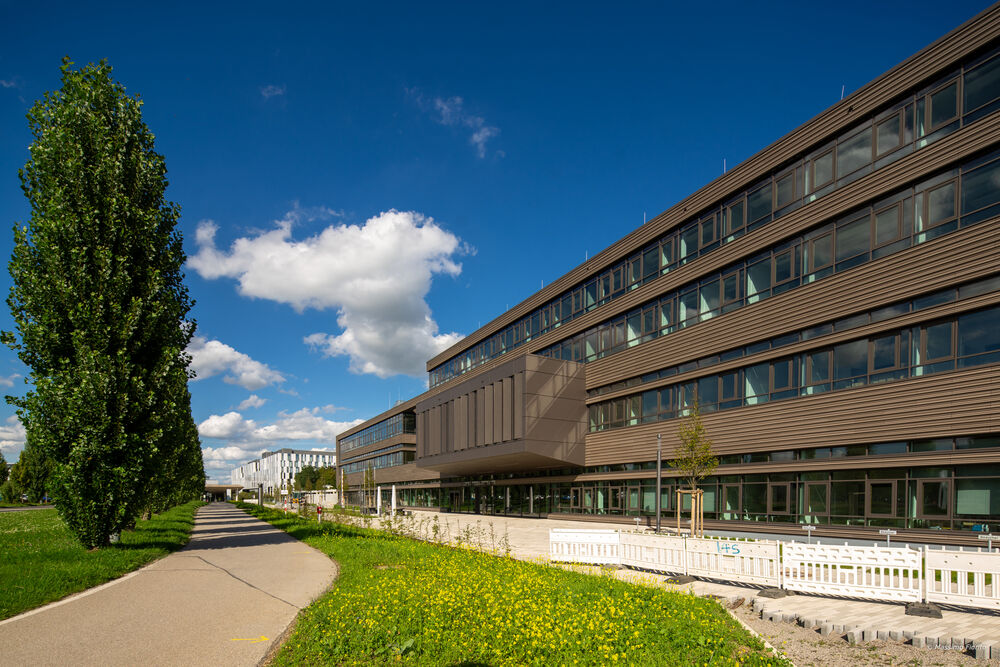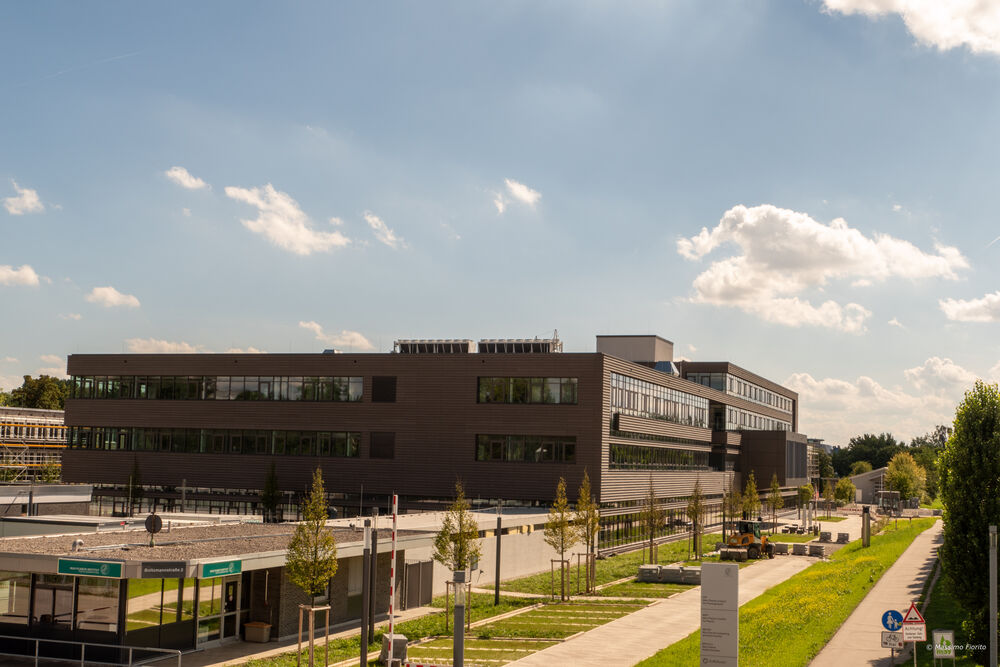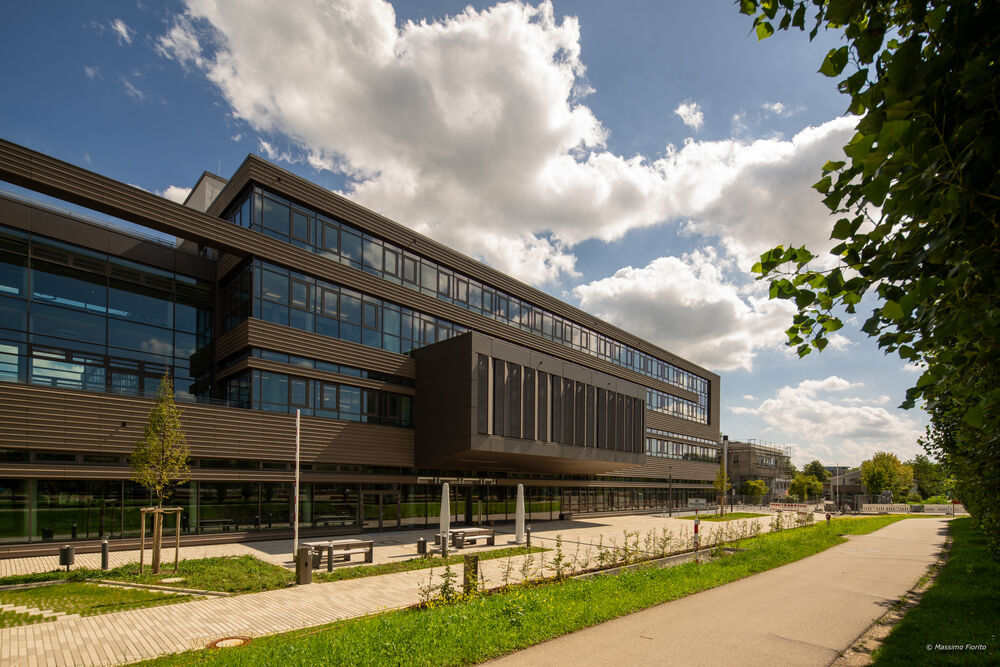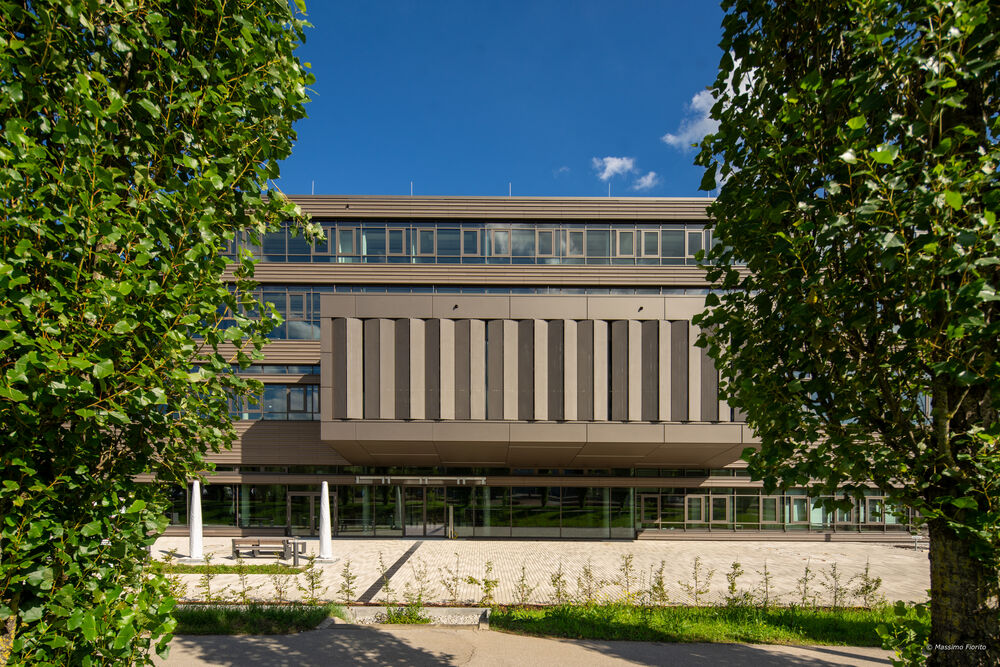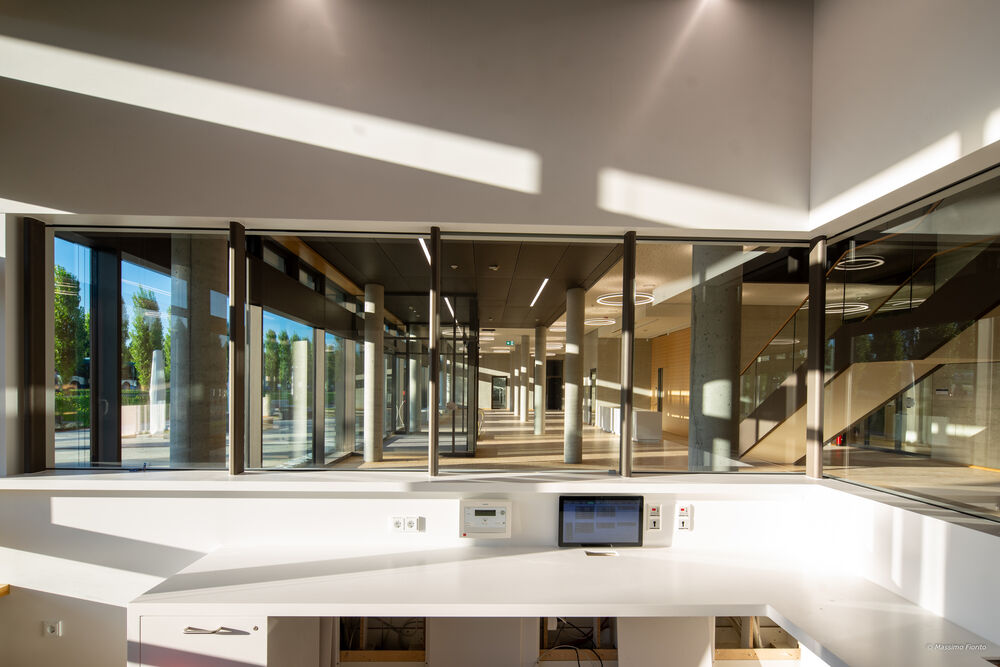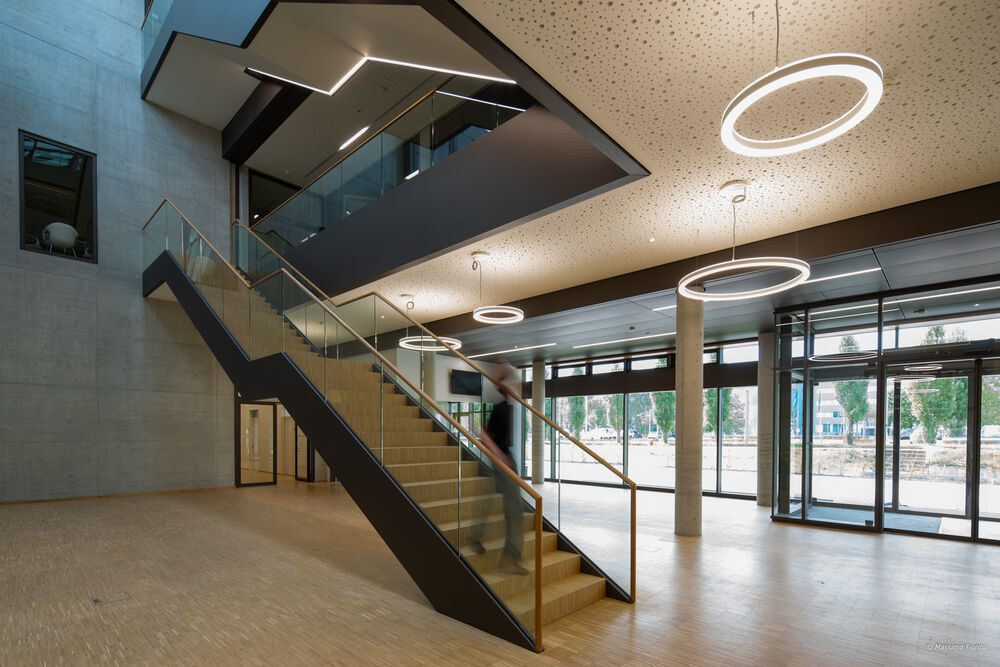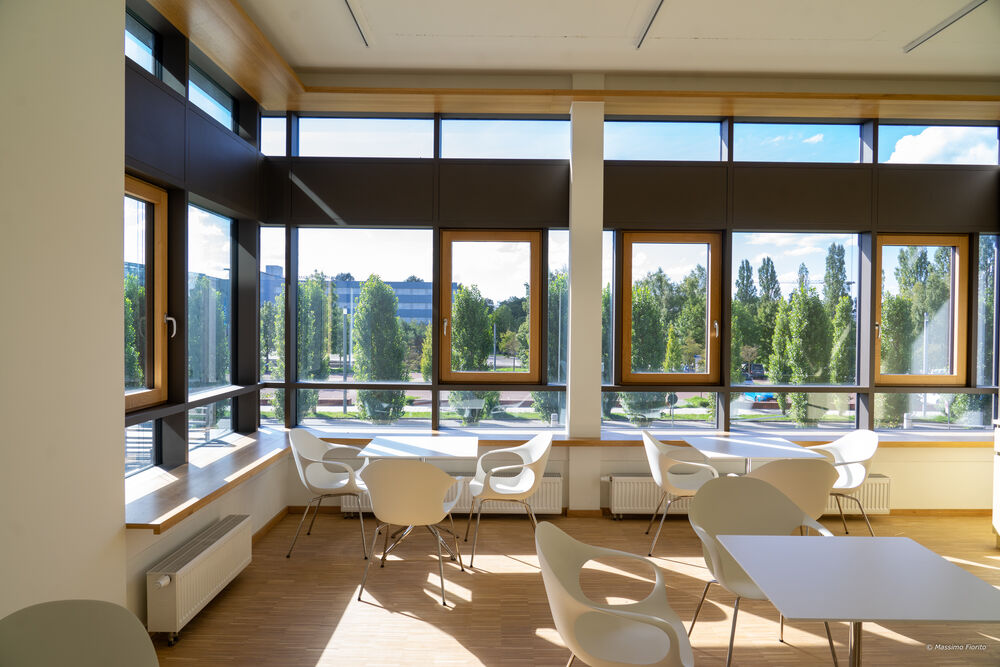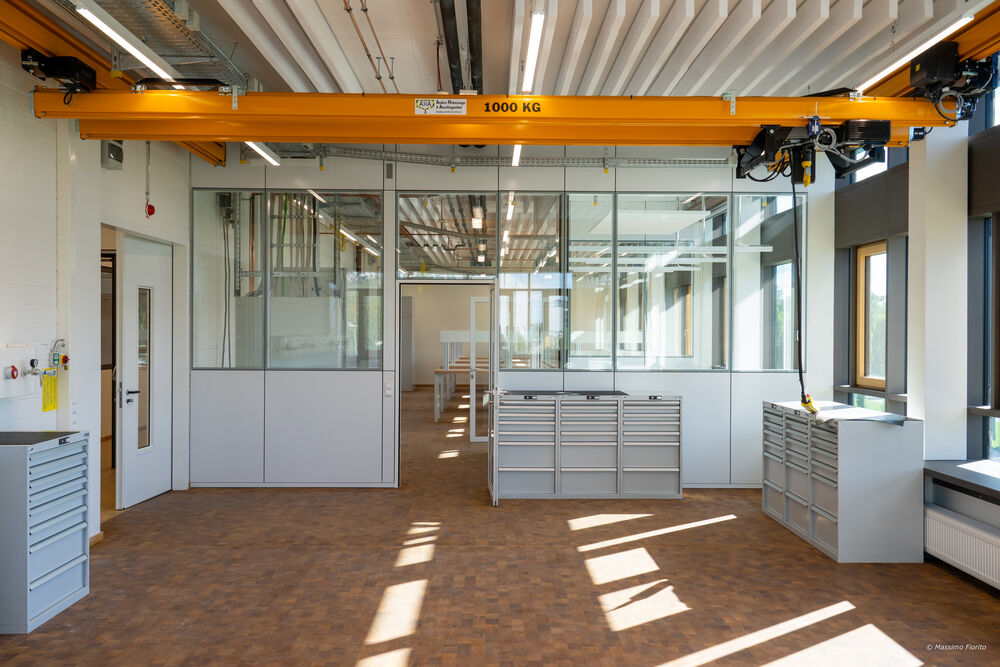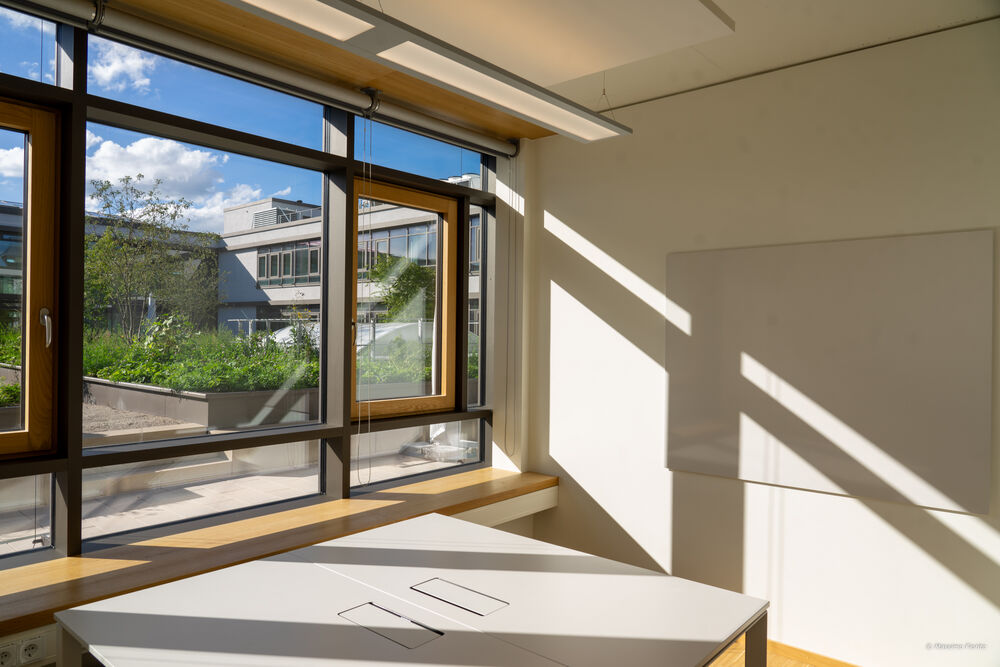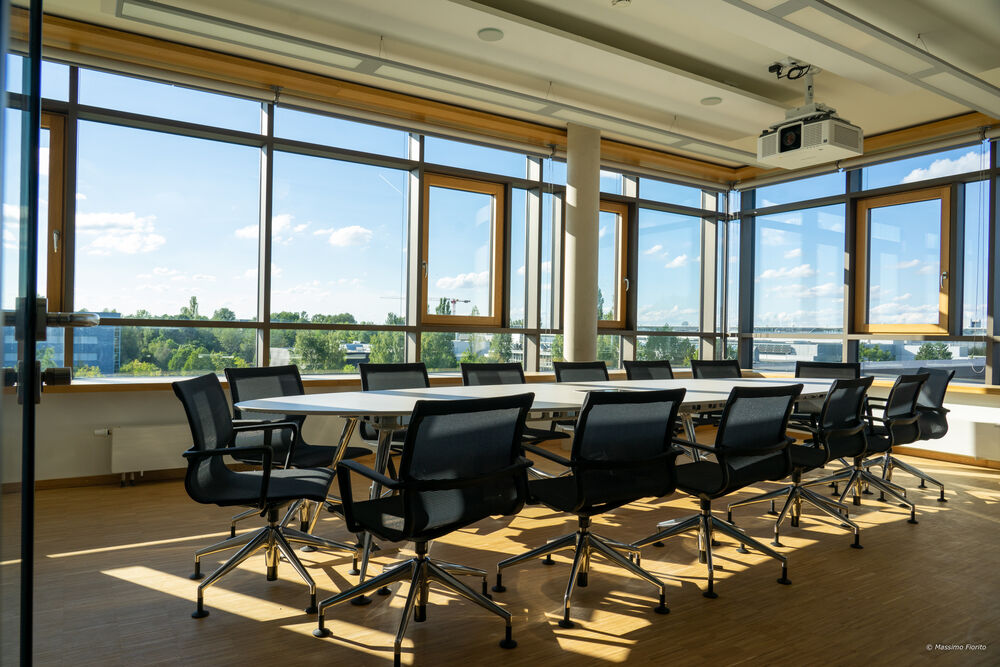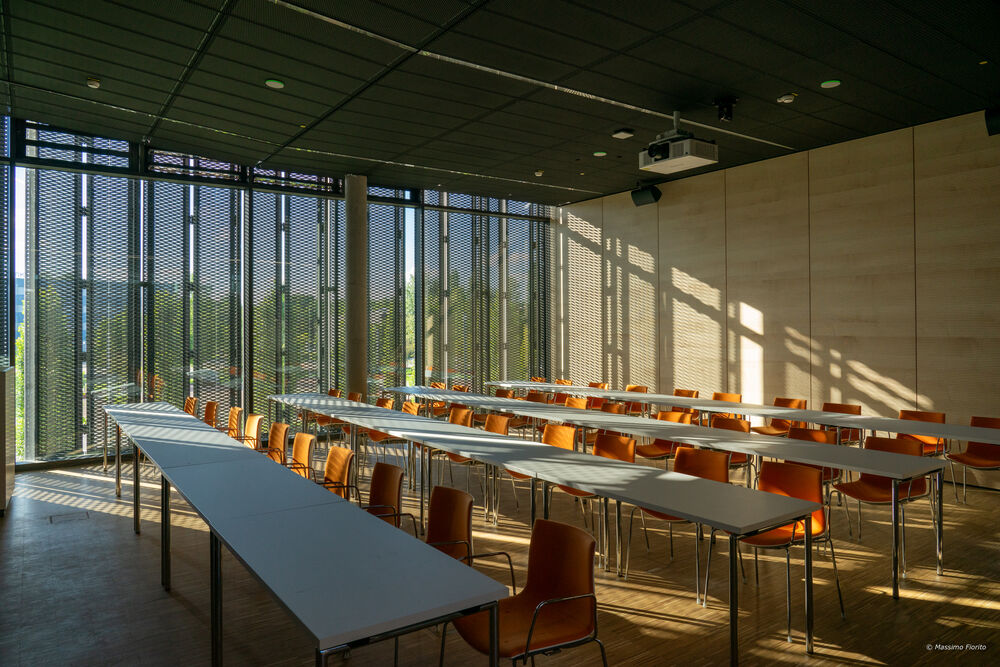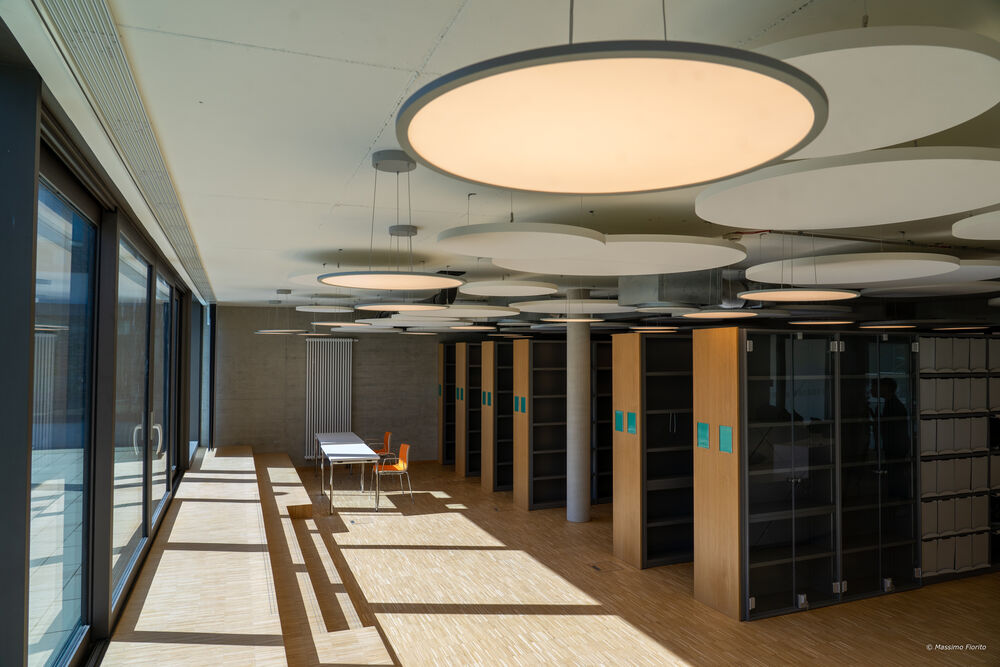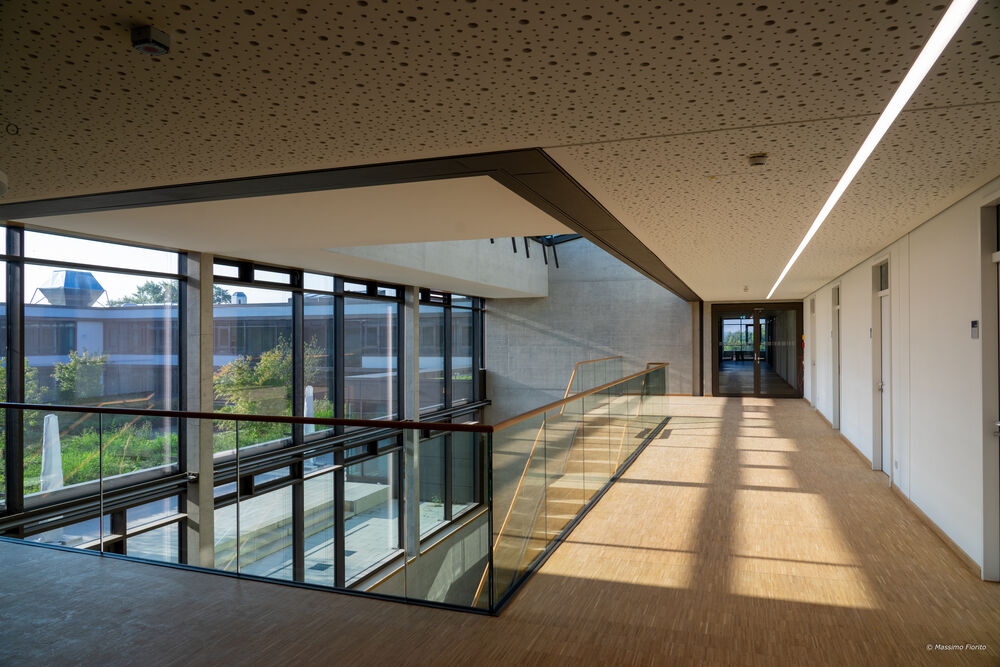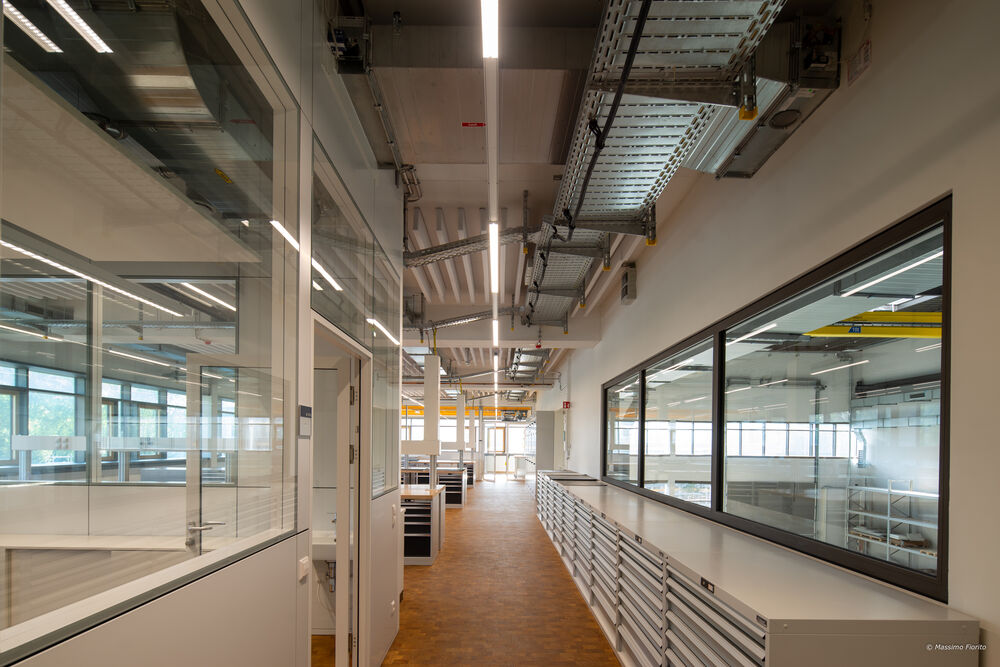Since November 2023, the Max Planck Institute for Physics resides at a new address. The new research building is located on the Garching Research Center premises, in the immediate vicinity of the MPI for Plasma Physics and Extraterrestrial Physics.
Why is the Institute moving into a new research building?
The former Institute building on the Föhringer Ring in Munich, in the Freimann-Schwabing district, no longer met today’s usual standards for a research Institute that conducts experimental work. Options for expanding or converting the current building were limited. This is due to the fact that the building, which Sep Ruf, the well-known Munich-based architect, planned and opened in 1958, is subject to historical protection both individually and in its ensemble.
In order to meet the higher standards for current and future research projects when it comes to size, division of space and technical infrastructure, it was decided in 2017 to erect a new building for the MPI for Physics.
The new building was designed by the Brechensbauer Weinhart + Partner Architekten architecture firm. It provides for two spatially separated units: The larger part of the building houses the laboratory and office wing; next to it is the workshop building for the various Departments, which is accessible from outside and inside at multiple points.
From the outside, the new building presents a facade that connects the two parts of the building to form an ensemble. The main entrance to the Institute is on the west side, facing Boltzmannstraße. The seminar room above it juts out of the building, and provides an attractive accompaniment to the entrance area.
The MPI for Physics thought it was important to create as many informal communication rooms as possible in order to promote exchange among the scientists. For this reason, besides 11 seminar rooms of different sizes, the new building offers a café in the central hall, a roof garden, several tea rooms and seating areas.
The sustainability principle
Security of supply has top priority in research buildings, from electricity and water to a smoothly functioning cooling system. Independent of that fact, the MPI for Physics places great value on sustainability. That is why, when the structures were planned, attention was given to reducing energy consumption.
When designing the outside area, the protection of local animal and plant life was given priority. Here, the landscape designers opted for wildflower meadows, green spaces with flowering bushes and fruit-bearing trees that offer food and habitat to numerous insects and bird species. Nesting sites for birds and bats living on the campus will be provided.
Proximity to other research Institutes
The move to Garching places the Institute in the immediate vicinity of other physics Institutes of the Max-Planck-Gesellschaft. Some of the Institutes’ physicists are working on joint research projects. There is also collaboration with the LMU and TUM that will benefit from the physical proximity.
In this way, the Max Planck Institutes, which historically share the same roots, are being brought closer together again. The Max Planck Institutes for Plasma Physics, Extraterrestrial Physics, and Astrophysics are all former Sub-Institutes of the MPP which were incrementally spun off.
